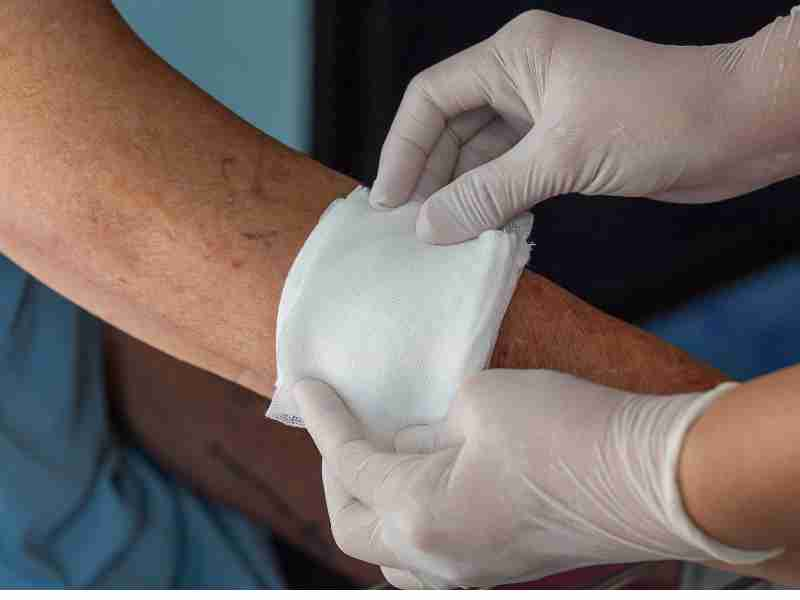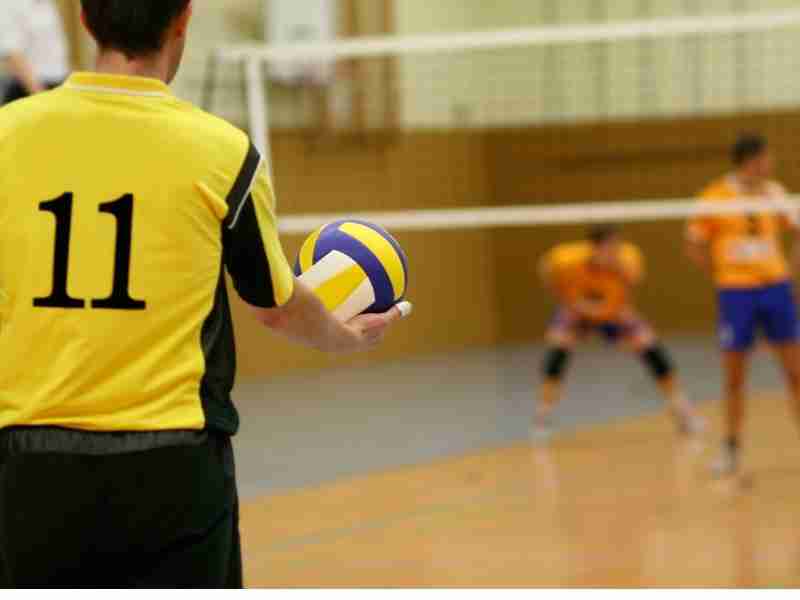
A lateral ankle sprain is the most common injury sustained by volleyball players. The lateral ankle ligaments are commonly sprained because players frequently land on their feet.
As another part, a player could jump for the net and land on an opponent’s foot, causing their weight to the outer edge of their foot.
The lateral ankle ligaments are at risk of injury if this force is greater than the ability of the ankle stabilizing muscles to absorb it.
Ankle Sprains and its Treatment

An ankle severely sprained ankle can become fragile, increasing your risk of further injury if you don’t treat and strengthen it properly. Chronic pain, arthritis, and further instability in the ankle joint are all possible outcomes of recurrent ankle sprains.
Diagnosis

Injuries to the ankle can range from mild to severe, depending on the damage’s extent and the joint’s instability.
A more severe ankle sprain necessitates a longer process of rest and recovery. Your ankle sprain will be classified into one of three categories based on the degree of the damage:
Degree 1
Ankle sprain feels discomfort and slightly mild swelling. This ligament has overstretched but not ruptured.
Degree 2
You can’t bear weight on your injured ankle because of the sprain. Long-lasting soreness, inflammation, and bruising are possibilities.
A tear in your skin has opened a vein under your skin, causing this. The ligament has been partially torn in this situation.
Degree 3
A complete tear of the ankle ligament has occurred. Severe pain, inflammation, and bruising result from a sprain of this degree.
You’ll feel like your ankle is giving way under your weight, and you won’t be able to sustain any of it.
Treatment

When treating a sprained ankle, it is essential to reduce pain and swell to treat future damage to the ligaments. You should rest your ankle for the first 24 hours as much as possible to 48 hours if you have extreme pain and swelling.
Stay away from anything that could worsen the swelling on the first day. If the ankle becomes stiff or painful, you should make an appointment with a doctor to have it checked out.
M.E.T.H. Approach
The METH acronym “Movement, Elevation, Traction, and Heat” is a treatment protocol highly effective for soft-tissue injuries. METH regulates blood flow and promotes rapid recovery. Use METH as often as possible to treat a sprained ankle in the first 48 to 72 hours after it occurs.
The success of the METH approach is determined by the patient’s ability to move and withstand traction, both of which vary in importance based on the degree of the injury and the time elapsed since it occurred.
Movement
The first 30 minutes after an ankle injury are essential for recovering range. Try using resistance bands to increase the difficulty of your bending and stretching exercises.
Do not put excessive pressure on the ankle, nor should weight-bearing be together.
Elevate
Rather than letting your sprained ankle rest on the floor as you sit On the sofa for the next 24 hours, prop it up on a pillow.
Gravity can help send blood back to the organs by elevating the ankle higher than the heart. The result is less inflammation and swelling.
Traction
In the event of an ankle sprain, you can have someone apply mild traction to your foot. Physical therapists use gentle, controlled tension to promote healing in the affected joint.
Avoid prolonged pulling; a couple of seconds is plenty.
Heat
It is considered that heat is the body’s natural response to injury, and delivering more blood to the affected region can aid in accelerating the process and prolonging it. Rather than constricting circulation, blood treatment improves it. Don’t keep the warm pad on your ankle for more than 30 minutes at a time.
Reduce periodic ankle sprains
Allow for maximum healing before returning to the court. During rehabilitation, strengthen the ankle and foot muscles. Rebuild balance and neuromuscular control with proprioceptive exercises. Before starting rehabilitation exercises, see your doctor.
A proprioceptive (balance) workout is wobbling board or resistance band training. Ankle sprains require 8 weeks of daily rehabilitation exercises to reduce re-injury. At Home or PT, these exercises can be done.
Exercises for Rehabilitation
Ankle Plantarflexion
1. Position yourself on the ground with your knees bent slightly.
2. Loop the middle of the band around one foot.
3. Push the foot down against the resistance of the band.
4. Maintain and gradually return to a neutral position.
Ankle Dorsiflexion
1.Sit on the floor with your knees bent.
2. Form a loop with the band, then attach one end of the loop to anything near the floor.
3. slip the afflicted ankle’s foot inside the loop.
4. Pull your ankle toward your head with the tubing as resistance.
5. Stop, hold, and gradually return to the resting position.
Ankle eversion
1. sit on the floor with your knees bent.
2. Form a loop with the band and fasten one end of the loop to something solid near the ground.
3. Position the afflicted ankle-foot inside the loop.
4. After wrapping the band around your ankle, you should push your ankle outward against the band’s resistance.
5. Stop, hold, and gradually return to the resting position.
Ankle Inversion
1. Make a loop with the band and fasten one end towards the floor
2. sit on the floor with your knees bent.
3. Insert the afflicted foot into the loop.
4. Pull your ankle inward as the band provides resistance.
5. holds the position and then slowly returns to a neutral position.
FAQ’s
what are the top five injuries in volleyball?
Ankle, finger, shoulder, knee, and back injuries are the most common in volleyball. Such injuries include tendinitis in the rotator cuff, the anterior cruciate ligament, the patellar tendon, the ligaments in the fingers, the ankle, and the low back (from stress or a herniated disc).
After how much time has passed, does an ankle sprain allow a volleyball player to resume playing?
Ankle sprains on the outside side of the foot heal quickly in most cases. After one to three weeks, most athletes can resume standard training. Some people experience stiffness and pain for months, and the process can be lengthened if the ligament damage is severe.
How about if I put weight on my sprained ankle?
If your ankle is sprained, don’t risk further injury by walking on it. Walking on the inflamed area before it has had time to heal could result in further injury. Ankle sprains are a common musculoskeletal injury that can happen during any activity, not just sports.
To what degrees does a sprained ankle require bed rest?
If your ankle is swollen and painful, you should try to keep it elevated for the first 24 to 48 hours.






